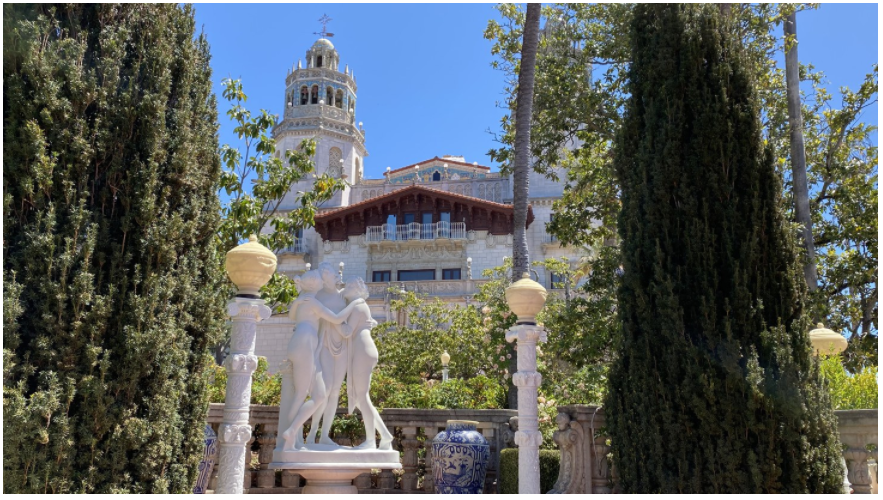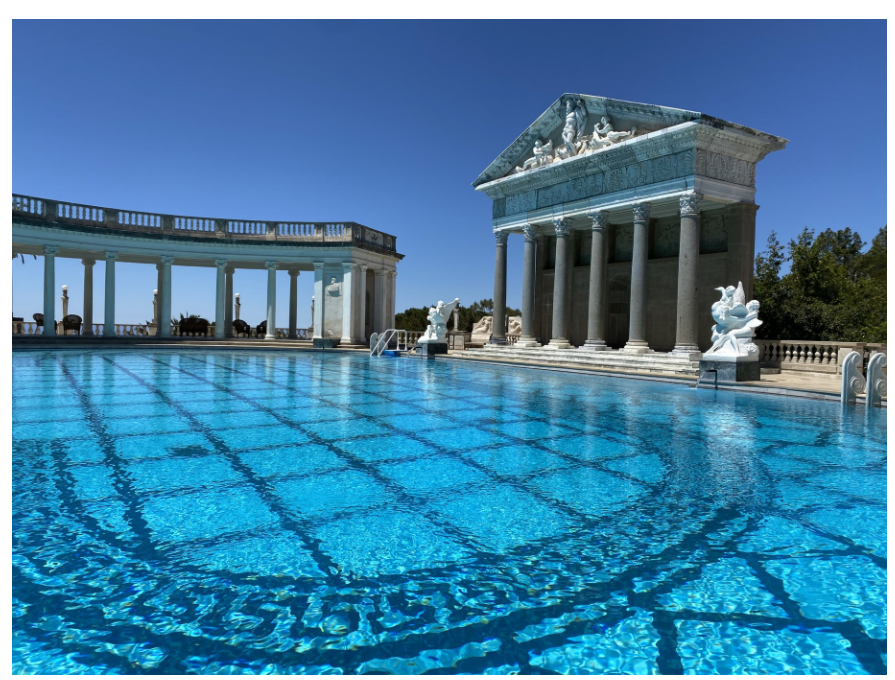Introduction
Julia Morgan was one of the most influential architects of the 20th century. She was the first woman who graduated from l’École Nationale supérieure des Beaux-Arts, the leading university in arts and design, significantly advancing women’s rights in education. After receiving the license, she created hundreds of notable projects in California, including Hearst Castle. Her numerous achievements turned her into a symbol of women’s empowerment, while her architecture style is studied in art universities globally. Ultimately, the current essay thoroughly examines the life of Julia Morgan and analyzes Hearst Castle as one of her most notable projects.
Biography Overview
To fully understand the scope of Morgan’s achievements, it is necessary to examine her biography. She was born in San Francisco in 1872 as the second child in the family and led a relatively peaceful life1. It is critical to note that her mother, Eliza Morgan, was an independent woman interested in business and trade, which was highly unusual for most women at the end of the 19th century2. It was evident that Julia was similar to her mother, continually challenging society’s rules and standards in her pursuit of education. She was a talented girl who excelled in math, Latin, and arts, and her dedication eventually led her to l’École Nationale supérieure des Beaux-Arts. In 1896, Morgan arrived in Paris to study architecture at the best arts university globally – a feat that no woman had ever achieved before her. Despite the language barrier and unfamiliar measurement systems, she successfully passed the exams and graduated in three years instead of five3. Before coming back to the United States in 1902, she traveled across Europe, drawing inspiration from historical monuments and local architectural styles.
Architectural Achievements and Gender Bias
In California, she continued studying while simultaneously participating in multiple projects in the Bay Area. She created the design for the Hearst Mining Building, introduced the technology of steel-reinforced concrete to local construction companies, and participated in the building of the Greek Theatre at UC Berkeley4. She quickly won the favor of local communities, receiving numerous job offers from wealthy clients. At this time, although the biography excerpts state that “she did not consider herself to be a feminist,” she actively promoted women’s rights in education5. Her activism allowed her to change the gender bias in architecture, and by the end of her life, nearly 20% of licensed architects were women in California6. For comparison, she was the only female architect in California in 1903, and this situation changed drastically over several decades7. As a result, both her architectural achievements and contribution to women’s empowerment make Julia Morgan one of the most notable architects of all time.
Hearst Castle
The second part of the essay examines Hearst Castle as the primary example of Morgan’s architectural excellence (see Appendix A). The story of Hearst Castle began in 1919 when Morgan was already a reputable architect with numerous achievements8. However, this construction was projected to be her largest project covering over 40,000 acres of land and lasting over 30 years9. It was a grand project, eventually resulting in astonishing success and Morgan’s crowning achievement.
The project included various architectural styles, interior designs, and cultural inspirations. Hence, it is complicated to determine one exact approach to the architecture of Hearst Castle, which comprises the main building with over a hundred rooms in different styles and numerous guest houses10. For instance, one of the most notable sites in Hearst Castle is the Neptune Pool, built in the tradition of Roman architecture (see Appendix B). While it was the initiative of Randolph Hearst to construct it, Morgan’s experience during her travels in Europe has significantly helped her build an authentic monument of Roman style11. Consequently, Hearst decorated it with numerous artworks and pieces of old monasteries from Italy.
During the construction time, Morgan received different requests concerning Hearst Castle. For instance, Hearst asked her to design a zoo, additional pools, luxurious guest houses, and other unusual pieces of architecture12. With nearly unlimited funds, Morgan could implement every possible idea in any style that fitted Hearst’s vision of the estate. In general, the reports state that the architectural style of Hearst Castle is Mediterranean Revival combined with other revival designs13. However, due to the wide variety of buildings, construction sites, and landscape forming over 40,000 acres, Hearst Castle cannot be summarized in one architectural style. Nevertheless, it is a grand example of architectural brilliance and the most notable project of Julia Morgan.
Conclusion
Julia Morgan is rightfully considered one of the most influential architects in history due to her overcoming of gender bias and notable achievements. Her career as a female pioneer in architecture was a demanding path, but she proved her competencies with over 700 projects during her life and changed the perception of women in architecture. Her most notable project – Hearst Castle – still remains a unique cultural site that attracts thousands of people annually. In summary, Julia Morgan was an excellent architect whose activist efforts promoted women’s rights in education and architecture, while her projects are studied in art universities globally even today.
Works Cited
Matt, Guilhem. “Hearst Castle Salutes Groundbreaking Architect Julia Morgan.” KCRW, 2022. Web.
Perry, Phyllis. All About Julia Morgan. Blue River Press, 2018.
Appendix A

Appendix B

Footnotes
- Perry, Phyllis. All About Julia Morgan. Blue River Press, 2018, p. 4.
- Phyllis. All About Julia Morgan. p. 5.
- Phyllis. All About Julia Morgan. p. 17.
- Phyllis. All About Julia Morgan. p. 22.
- Phyllis. All About Julia Morgan. p. 23.
- Phyllis. All About Julia Morgan. p. 25.
- Phyllis. All About Julia Morgan. p. 25.
- Phyllis. All About Julia Morgan. p. 42.
- Matt, Guilhem. “Hearst Castle Salutes Groundbreaking Architect Julia Morgan.” KCRW, 2022. Web.
- Guilhem. “Hearst Castle Salutes Groundbreaking Architect Julia Morgan.”
- Phyllis. All About Julia Morgan. p. 42.
- Phyllis. All About Julia Morgan. p. 43.
- Phyllis. All About Julia Morgan. p. 44.